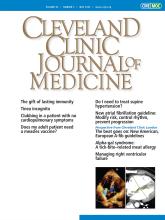Article Figures & Data
Tables
- TABLE 1
Clinical classification of COVID-19 infection, and the role of complement activation
Disease severity Percentage of cases Features/role of complement activation Asymptomatic 20%–40% Immune system shuts off the virus; no clinical signs or symptoms of infection; immunity induced; “natural” vaccination
Complement activation beneficialUpper respiratory tract (cold-like syndrome) 30%–70% Virus replicates in upper-airway tissues leading to sore throat, cough, fever, sneezing, altered taste and smell, “typical cold” syndrome; usually lasts 2 to 5 days; recovery in 2 to 3 weeks
Complement activation beneficialaModerately severe 5%–10% Viral load is greater; extension to deeper parts of the lung (pneumonia) and possibly to other tissues, with prominent inflammatory picture
Complement activation not beneficialSevere 1%–5%a Heavy viral load; extension to extrapulmonary tissues, especially endothelial cell populations; thromboembolic phenomena
Virus is never adequately controlledb
Virus eventually controlled and eliminated, but often with residual effects
Complement activation poor for host






